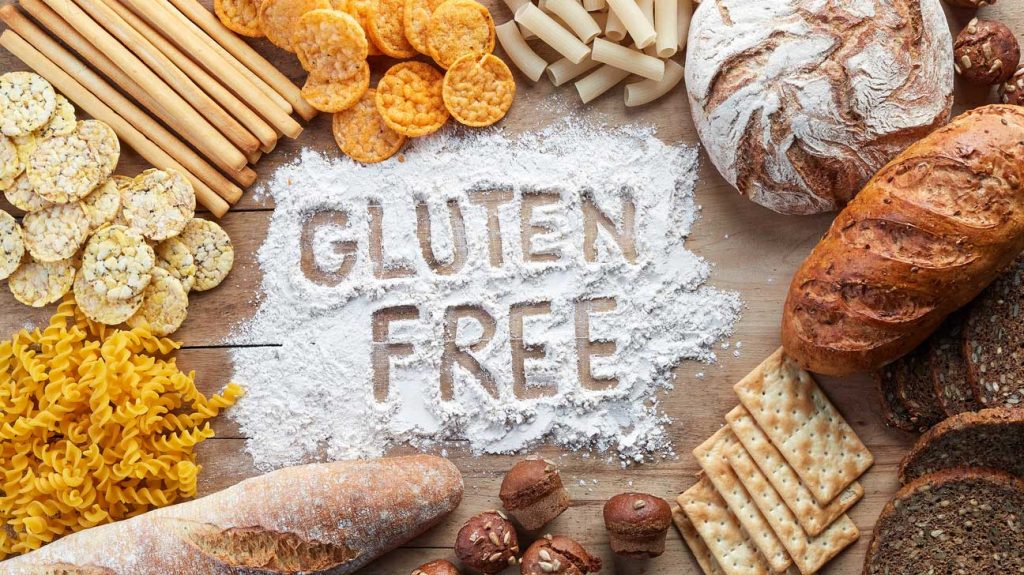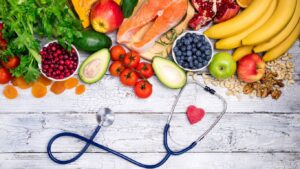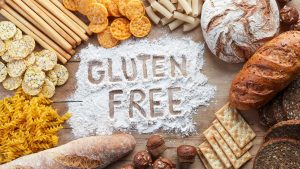Confused about gluten? That’s not a surprise! Its constant presence in the media spotlight has sparked widespread curiosity about the benefits of eating this way.
So if you’re wondering what all the fuss is about, and whether you should pay attention, you’re not alone. Going gluten-free is a growing trend and a lot of people buy gluten-free products thinking they are healthier.
It’s time to debunk the hype and bring you the truth about gluten. Here are the facts about gluten free (going gluten-free means avoiding wheat, barley, rye and oats).
So what’s wrong with gluten?
Gluten is a protein in wheat, barley, oats and rye. It gives foods such as bread and pasta their springy texture and helps baked goods stay moist and fresh.
Gluten isn’t the devil — for most of us, it’s totally harmless. A small number of people, however, do have to avoid foods that contain gluten, mainly for two reasons:
Coeliac disease
Around one in 100 people have coeliac disease — meaning this one per cent is unable to digest gluten.
For them, gluten triggers an immune response that inflames the digestive system, among other areas of the body. This inflammation damages the gut lining, making it difficult to absorb nutrients from food.
There are no specific symptoms of coeliac disease but it can cause uncomfortable bloating, fatigue, excessive flatulence, nausea, vomiting and constipation or diarrhoea (or both), as well as vitamin and mineral deficiencies.
The only way to treat coeliac disease and repair the intestinal lining is to get rid of gluten from the diet for good.
This means cutting out all foods that contain wheat, barley, oats and rye. In time, the gut heals, symptoms ease, and as long as gluten stays off the menu, the body begins to absorb food normally again.
Even a tiny amount of gluten (equivalent to one-hundredth of a slice of bread) can cause gut damage in people with coeliac disease.
Therefore it’s important to avoid cross-contamination with gluten-based foods (which may mean family members have to use separate kitchen utensils such as chopping boards or toasters).
Coeliac disease often goes undiagnosed. In fact, around 80 per cent of people with the disorder are unaware they have it.
Irritable bowel syndrome (IBS)
IBS accounts for around five per cent of GP visits globally.
IBS is aggravated by the consumption of FODMAPs, a specific group of short-chain carbohydrates (FODMAP is an acronym for the scientific names of these carbohydrates).
When the body has trouble digesting one or more of these carbohydrates, they ferment in the gut, giving rise to symptoms such as stomach pain, bloating and constipation or diarrhoea.
Emerging research shows many with IBS see improvements when they follow a low-FODMAP diet. Gluten itself isn’t a FODMAP, but there are some foods that contain gluten, such as wheat products, that are also high in FODMAPs.
Therefore a lot of people with IBS mistakenly blame gluten for their symptoms. People who experience one or more unpleasant IBS symptoms after consuming starchy foods may think they have a sensitivity to gluten.
There is, however, limited scientific evidence supporting gluten sensitivity, and experts now suspect FODMAPs may be the real culprits.
Should I go gluten free?
If you suffer from troublesome digestive symptoms, see a doctor before you eliminate gluten from your diet. Your doctor may advise you to have a blood test for coeliac disease.
This test scans for antibodies in the blood, which will be present only if you’ve been eating gluten-based foods. If you have already cut out gluten, you will need to reintroduce it to your diet before having the test.
If you do have coeliac disease, your damaged digestive system may be failing to effectively absorb nutrients from your food. So an accurate diagnosis will help you properly manage your condition.
Are there any risks to going gluten free?
There’s a world of difference between trimming starchy pasta, pizza and cakes from your diet and cutting out all foods containing gluten.
If you eradicate these foods without a diagnosis of coeliac disease, you could become deficient in certain nutrients.
A gluten-free diet must be carefully managed so it isn’t lacking in fibre and essential vitamins and minerals.
Take care not to fall into the common trap of replacing high-fibre, gluten-containing breads and cereals with highly refined carbohydrate foods, as these can constipate you and leave you feeling hungry.
If a doctor diagnoses you as having coeliac disease, remember to focus your food choices on less-processed options: treat your body to naturally gluten-free fresh vegetables and fruit, lean meats, eggs, nuts, dairy foods and high-fibre gluten-free grains such as quinoa and brown rice.
Can a gluten-free diet help me lose weight?
The words gluten free do not automatically mean healthy or low kilojoule. Indeed, gluten-free versions of potato chips, chocolate, muffins and biscuits are no better for you than their gluten-containing counterparts.
People who lose weight following a gluten-free diet usually do so because they are forgoing high-kilojoule foods such as cakes, biscuits, pizza and pastries. And it’s not the gluten that makes these foods so unhealthy.
How can I be sure that a product is gluten-free?
If any food contains ingredients that are derived from gluten-containing grains, our laws require the packet’s ingredients list to declare them.
Coeliac Australia endorses every product that bears this crossed-grain logo as suitable for a gluten-free diet.
Allergy or intolerance?
A genuine food allergy results in obvious symptoms. Your reaction will be quick and dramatic, and you may experience skin rashes or wheezing, or both.
An intolerance is somewhat harder to identify, as symptoms can be vague and not surface for hours, or even days.
You may be interested to know that coeliac disease is neither an allergy nor an intolerance — it’s actually an autoimmune disease.
Help! Gluten-free foods are so expensive!
Gluten-free products tend to be pricey, but become a savvy label-reader, and you will soon find there is far more on offer than you first thought. Try these tips to go gluten-free without going broke.
Shop beyond the health-food aisle
This section conveniently groups allergy-friendly products but the prices can be steep.
Happily, you’ll find numerous gluten-free foods in other supermarket sections. Read ingredients lists carefully, too, looking for any mention of wheat, rye, barley and oats.
Substitute rather than skip
Get creative: use lettuce cups in place of wraps, baked potatoes as a bed for bolognese, and crushed gluten-free cereal as crunchy breadcrumbs.
Cook from scratch
With access to such a huge range of gluten-free packaged foods, you may be tempted to cut cooking corners.
But bear in mind the bounty of deliciously fresh foods you can eat. Vegetables, fruit, lean meat, fish, chicken, eggs, brown rice, lentils, nuts and seeds are all nutritious and naturally gluten-free foods.
Links for useful information about going gluten free and how to safely implement a low FODMAP diet + recipes can be found below:
https://www.coeliac.org.au/s/the-gluten-free-diet
https://www.monashfodmap.com/ibs-central/i-have-ibs/starting-the-low-fodmap-diet/




